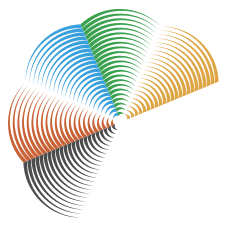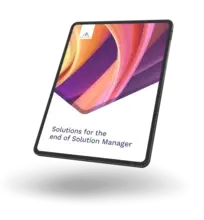
Contributed by Thomas LaRock, Head Geek at Solar Winds
Traditional monitoring aggregates and displays the data tech pros use to determine whether their systems are operating correctly. To convey this much-needed information, traditional monitoring generates alerts — many alerts. While some alerts are vital to fixing a specific problem, the rest are noise. And filtering out the noise can be a job all on its own.
Complex IT infrastructures have microservice architectures, so it’s vital tech pros observe, monitor, and analyse their organisations’ cloud environments efficiently. They need the alerts without the noise (and the resulting alert fatigue). With less noise, tech pros can find a signal.
Integrated observability solutions from the likes of SolarWinds allow tech pros to filter seasonal trends using time-series analysis, so the end-user can receive guidance on exactly where action is required. Organisations can then gain end-to-end oversight of their service delivery and component dependencies. These solutions bring real-time control into multi-cloud environments because they are integrated with AIOps (artificial intelligence for IT operations) and machine learning (ML).
The embedded AIOps and ML within Observability solutions can analyse the noise and the deluge of accumulated data, allowing tech pros to move quickly and effectively to manage services that support customers and employees.
In short: Observability transforms analysis in seconds instead of hours.
Integrated with Intelligence
Traditional monitoring uses metrics-oriented dashboards to assess telemetry data against manual or basic, statistically relevant thresholds. It’s typically focused on a specific network, cloud, infrastructure, or application element so tech pros can identify anomalies, investigate problems, and discover a solution.
But monitoring has its limits. It doesn’t offer cross-domain correlation, service delivery insight, operational dependencies, or predictability. To make things worse, monitoring silos will develop in time. This is where Observability solutions can help.
Observability won’t replace traditional monitoring. Instead, Observability uses the information gathered through monitoring as a critical element to its services. Observability analyses the collected data and compares it to expected outcomes and objectives. Tech pros will better understand the state of their infrastructure and applications using this data.
AIOps and ML will allow Observability solutions to go further by delivering predictive analytics. An Observability platform will detect a potential problem before it occurs, then automatically respond to it independently.
However, when a tech pro needs to be involved, they can be alerted. Then, embedded AIOps and ML provide necessary insights, automated analytics, and actionable intelligence through cross-domain data correlation, massive real-time and historical metrics, logs, and trace data. There is where you spot the signal, and the end solution is easier to find.
Throughout, Observability reduces operational noise, allowing tech pros—including DevOps and security teams — to become more proactive in discovering issues and anomalies. Teams can then automate tasks and advance closed-loop operational management, reporting, and capacity planning efficiencies —across IT domains.
Thanks to AIOps and ML, Observability solutions advance business agility by allowing tech pros to identify problems and discover deficiencies. They then characterise and predict impactful business service, component, and activity-state changes.
Observability solutions are scalable and have lower administrative overhead
Integrated Observability solutions optimise IT efficiency, eliminate redundant tools, and therefore help reduce costs. Significantly, teams shift away from a reactive stance to a proactive one. Observability allows teams to visualise and continuously analyse business service and component relationships, deviations, and dependencies. As a result, they also see performance, compliance, and resilience improve.
With hybrid remote work here to stay — and with the rise of SaaS apps and ubiquitous smart devices—the loss of connectivity can lead to poor workplace communication, a site going dark, or large-scale disruption. AIOps and ML help Observability solutions provide dynamic protection against these and other difficulties.
But don’t think of Observability as one more “thing” or another technology thrown into the stack. Instead, it’s a next-generation, integrated IT infrastructure, application, and database performance management solution. Like bacon, Observability makes everything better.
Observability — with integrated AIOps and ML — enables organisations of any size to understand and manage IT service delivery more easily and holistically. It’s cost-effective because Observability continuously allows IT organisations to improve performance and reliability. This enhances the customer experience across complex, diverse, distributed hybrid and cloud environments. Observability, with integrated AIOps and ML, will take traditional monitoring practices to the next level.










